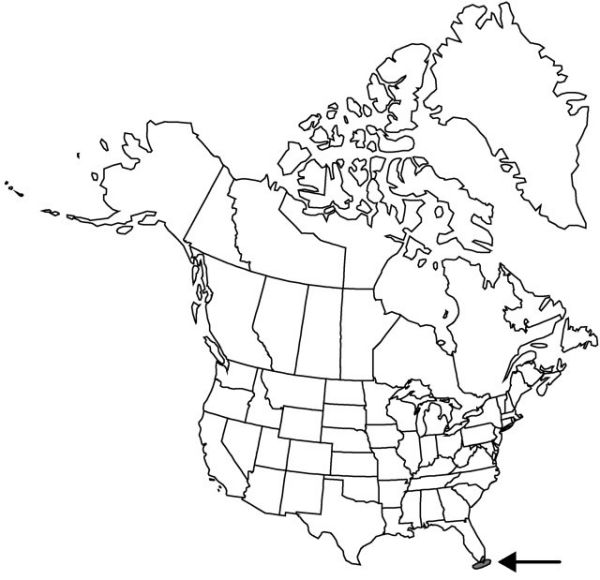Agave decipiens
Bull. Misc. Inform. Kew 1892: 184. 1892.
Plants arborescent, trunks 1–3(–4) m, frequently suckering; rosettes not cespitose, 10–15 × 15–20 dm. Leaves spreading to recurved, 70–100(–200) × 7–10 cm; blade green, without bud-prints, linear-lanceolate, rigid, adaxially concave toward apex, abaxially convex toward base; margins slightly wavy, armed, teeth single, 2–3 mm, 1–2 cm apart, often with some interstitial smaller teeth; apical spine dark brown, conical, 1–2 cm. Scape 3–5 m. Inflorescences paniculate, often bulbiferous; bracts caducous; lateral branches 10–18, ascending, comprising distal 1/2 of inflorescence, longer than 4 cm. Flowers 15 or more per cluster, erect, 6–8 cm; perianth greenish yellow, tube funnelform, 11–13 × 4–6 mm, limb lobes incurved, drying reflexed on tube, subequal, 18–22 mm; stamens long-exserted; filaments inserted on 2 levels at or slightly above mid perianth tube, erect, yellow, 4–5 cm; anthers yellow, 22–25 mm; ovary 4–5 cm, neck absent. Capsules short-pedicellate, ellipsoid to oblong, 3.5–5 cm, apex beaked. Seeds not seen. 2n = 120, 150, 160, 180, 190.
Phenology: Flowering mid fall–early winter.
Habitat: Sandy soil in hammocks
Elevation: 0 m
Discussion
Agave decipiens might have been introduced from Latin America by Native Americans; it is not otherwise known from the wild. The proliferation of chromosome numbers suggests prolonged human propagation and a probable hybrid origin. Until demonstrated otherwise, the species is considered a rare and localized native species known only from a few sites in southern Florida. H. S. Gentry (1982) discounted the suggestion that A. decipiens was found on the Yucatán peninsula of Mexico. He considered such plants to be A. angustifolia.
Selected References
None.
